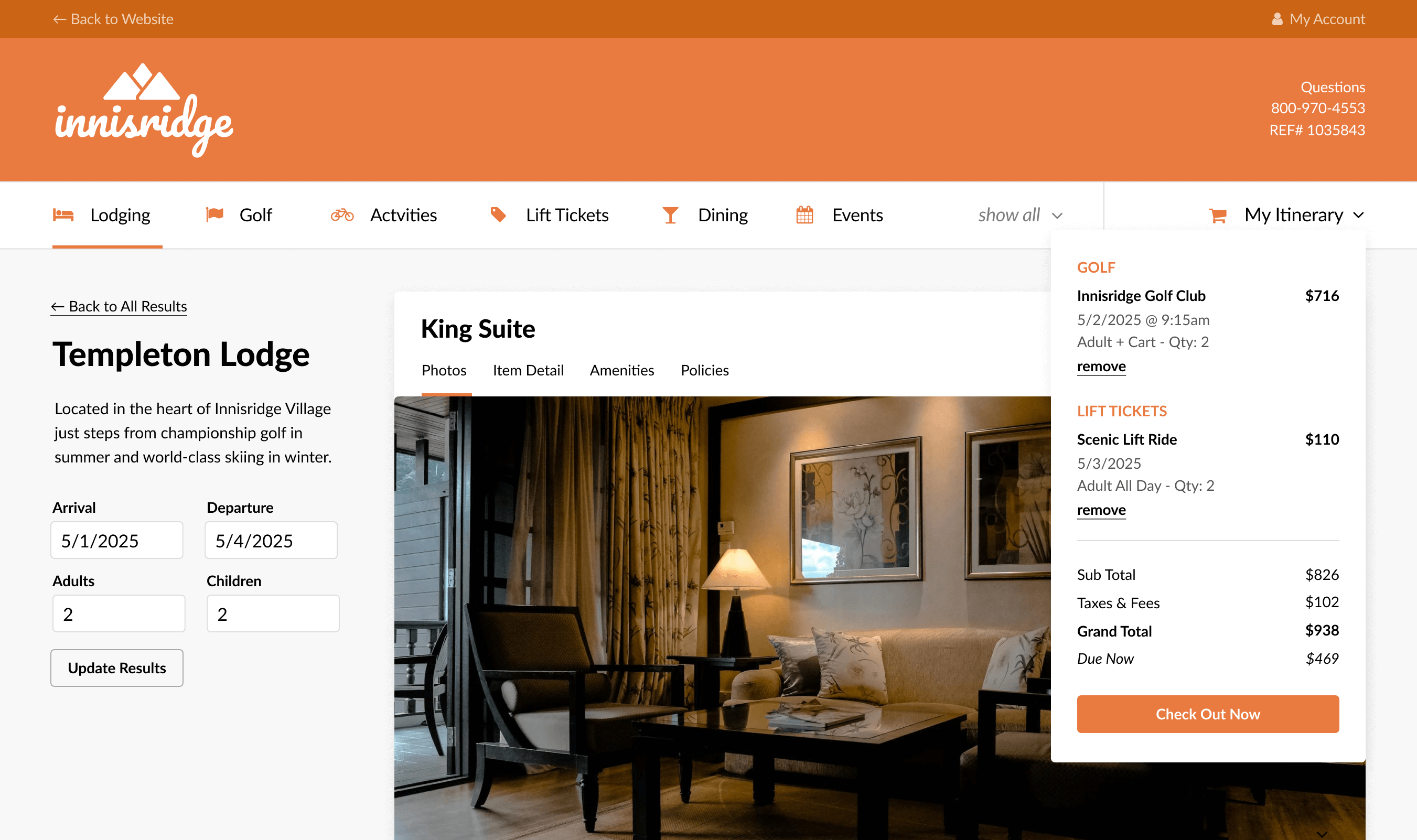
News
DENVER, COLO., June 18, 2019— With four of the six summer months (March through August) already “in the bank” or on-the-books, Southeast destination resorts in five states are on a solid path to surpass last summer’s occupancy, room rate, and revenue figures. All six summer months are pacing ahead of last year according to the most recent DestiMetrics* Market Briefing released yesterday by Inntopia with data compiled through June 30 from nine participating Southeast resort destinations.
Actual aggregated occupancy for the month of June was up 1.9 percent in a year-over-year comparison to last June, and posted a 3.5 percent gain in the Average Daily Rate (ADR) to deliver a 5.4 percent aggregated boost in revenues for the month.
For the full summer season that includes both actual and on-the-books data, as of June 30, aggregated occupancy is up 4.8 percent with ADR up 2.1 percent. When combining the uptick in both occupancy and rates, properties are experiencing a healthy 7.1 percent gain in revenue compared to the summer of 2018.
“This summer season’s lodging performance is virtually assured to be a strong one with only two months of the reporting period yet to go,” assured Tom Foley, senior vice president for Business Operations and Analytics for Inntopia. “May and June both outperformed last year’s actual occupancy and revenue figures, and what we’re seeing on-the-books for July and August makes us feel confident that this summer will be a winner since they are typically two of the strongest months,” he added.
However, the scenario for the beginning of the upcoming winter season is considerably less promising. Bookings made in June for arrivals in the months of June through November were down 6.9 percent compared to June bookings in 2018. The only exception to the six-month pattern was the “last minute” bookings made during June for arrivals in that month, which were up four percent compared to last year. The other five months all posted declines in bookings with November showing the deepest drop—down 44.7 percent compared to the same time last year. However, increases in daily rates are helping to offset the declines in occupancy for the months of September through December.
The Briefing also noted that on-the-books revenue for the months of September through December is down four percent compared to the same time last year. Occupancy is declining although rates are rising—a pattern that has been emerging for the past 60 days. It is unclear if the rising rates are the explanation for the decrease in occupancy.
Economic indicators for the month of June were once again mixed. The Dow Jones Industrial Average (DJIA) rebounded 6.23 percent from May to post the highest monthly closing on record and to become the strongest June since 1938. The market was buoyed by the Federal Reserve hinting it will lower interest rates in the near future to mitigate the impact of trade instability with China.
“While Wall Street is celebrating the Federal Reserve’s possible positive announcement, many businesses are struggling to adapt to the economic challenges and business fluctuations created by trade wars and tariffs–both threatened and real,” cautioned Foley.
In a flip flop from last month, despite the record high in the DJIA, the Consumer Confidence Index (CCI) fell a sharp 7.5 percent to close the month at 121.5 points. This marks the largest decline in confidence since July 2015 and the fifth drop in the CCI in the past eight months. The Unemployment Rate rose to 3.7 percent during June and was driven by prospective employees returning to the job market with the creation of 224,000 new jobs—dramatically exceeding analysts’ expectations and surging well past last month’s anemic 72,000 new jobs. The unemployment figures go up when new job seekers are included in the monthly statistics.
“The only point of concern in this month’s Briefing is the booking pace weakness for early winter,” explained Foley. “Although it is still relatively early in the winter booking season and the volume isn’t large, it is still a concern to see such a sharp downward shift in the booking pace. We are starting to see that some cracks in the economy are having an influence on destination travel behavior–not just in the Southeast but other regions around the U.S. We will be watching closely to see if consumers continue to push back against the rising rates and how properties adjust to the changing dynamics,” he concluded.
-30-
*DestiMetrics, part of the Business Intelligence platform for Stowe-based Inntopia, tracks resort performance in selected mountain and southeast U.S. destinations. They compile forward-looking reservation data each month and provide individualized and aggregated results to subscribers at participating resorts. Data from the Southeast is derived from nine resort destinations in five states including South Carolina, Virginia, Georgia, Florida, and Alabama.